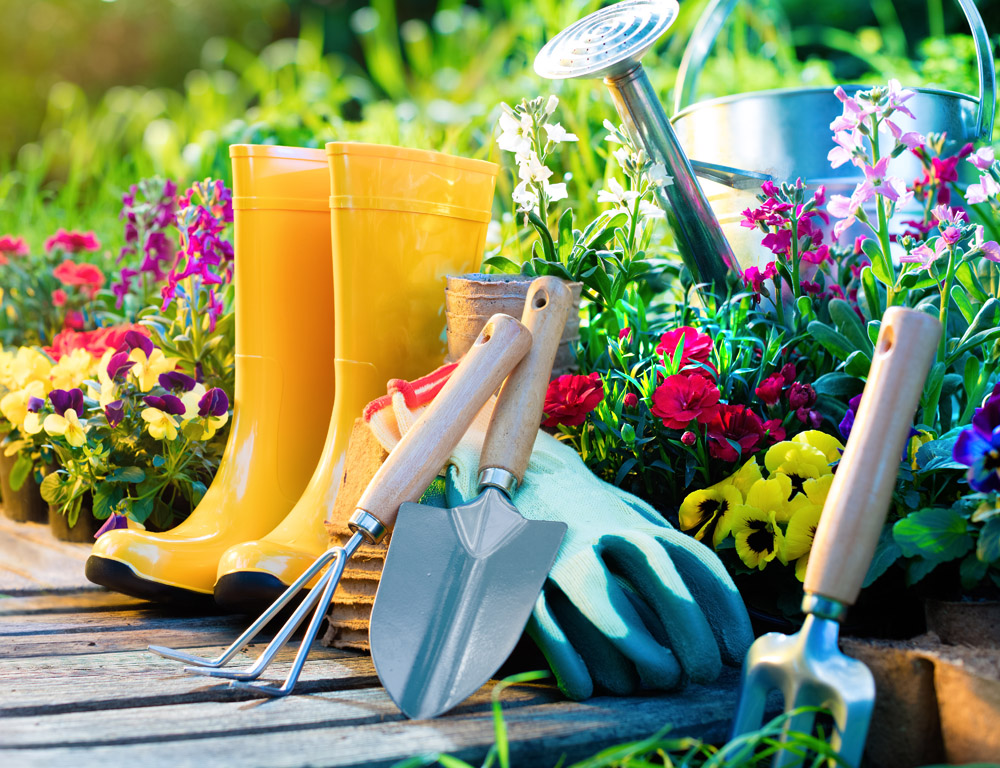

Nov. 10, 2022
If you're planning to start a garden, you probably know that it takes more than a few gadgets to get the job done. However, you don't need an entire shed full of tools for every type of plant you plan to grow.
And you certainly don't need to give up growing your own vegetables and fruits because you lack gardening tools or expertise. We've prepared a detailed guide to the essential garden tools you need to get started, plus helpful hints and optional add-ons that can make gardening easier.
Save yourself (and your wallet) a trip to the garden center by sticking with these essential gardening tools, which will get you off to a strong start.

1. Trowel
A small hand-held trowel is an essential tool for many everyday gardening tasks, including breaking up clods of soil, digging small holes, transplanting young plants, and even digging out weeds. Container-only gardeners and large gardeners alike will find themselves using a small trowel on a regular basis. If you're spending money on a piece of entry-level gardening equipment, this is the one to go for - choose one with a sturdy metal blade and a sturdy wooden handle.
2. Pruning Shears
Whether you're harvesting fresh produce or cutting back berry bushes, you'll want to equip yourself with a sturdy set of pruning shears.
For a clean cut, cut at the nodes of the plant (where the branch meets the stem in a Y-shape). Once your garden matures, you can invest in a set of shears designed for branches that are 2 inches or wider.
3. Hose and/or Watering Can
If you put your plants directly in the ground, then buy a hose and make sure it's long enough to reach from your faucet to your garden. Consider adding a sprayer attachment that lets you control water flow and pressure. If you're purely a container gardener, a watering can will suffice - look for one that's lightweight and still portable when filled.
For best results, water in the early morning when temperatures are cooler. Avoid midday watering, which evaporates too quickly, and evening watering, which can leave the soil waterlogged and create a breeding ground for harmful fungi and bacteria.
4. Garden Rake
Garden rakes usually have a long wooden handle with uniform metal tines and are stronger than the leaf rakes you use to clean up grass clippings and other loose material. They make it easy for you to create smooth, level soil while removing unwanted weeds. If you're tilling tough, weedy ground, consider swapping the rake for a garden hoe, a more weighty landscape tool that can help you chop and clear irregular spaces and remove weeds.
5. Angled Shovel
A shovel seems simple enough, but you'd be surprised at how many options are available in the store. Choose shovels with an angle (with a triangular head) that will give you the ability to dig holes, move soil and relocate plants. If you're starting a large landscape bed, a square garden trowel will help you make cleaner cuts, but for most novices, an angled shovel is the tool for the job.
If your budget allows, consider these five items that will help make your entry into food gardening a bit smoother.
1. Gardening Gloves
While some people won't touch the soil without wearing gardening gloves, they're not technically necessary, especially when it comes to lighter workloads like container gardening. However, they will help prevent blisters and scratches, not to mention keep your hands clean. Look for gloves with reinforced fingertips and padding for added protection, plus a tightenable wrist strap to keep soil out.
2. Kneeling Pad
If you're concerned about soreness from kneeling for long periods of time, consider this comfort item. Most garden centers offer rectangular foam pads that you can place under your knees while you work.
2. Sprinkler
You can water your vegetable garden with a hose and sprayer attachment (plus a few minutes of your time), but sprinklers have proven to be useful for larger spaces. If you need to cover a lot of ground, look for a swinging or rotating sprinkler that will maximize the use of water.
3. Wheelbarrow
If you're working on a heavy project, consider using a wheelbarrow to help you move lots of soil, mulch, compost and plants (and, hopefully, a bumper crop in a few months!) . Plastic wheelbarrows are less expensive (not to mention heavier), while metal wheelbarrows may prove to be more durable. For smaller projects, an old 5-gallon bucket will do the trick.
Latest Post
SINOTOOLS Showcases Popular Hand Tools at the 138th Canton Fair
SINOTOOLS successfully participated in the 138th Canton Fair, showcasing high-quality hand tools and connecting with global clients. Booth No. 13.1H27, Guangzhou, China.
Oct. 21, 2025
Reflecting on Our Journey at Japan DIY Homecenter Show 2025
From August 21st to 23rd, our team had the pleasure of attending the Japan DIY Homecenter Show 2025, held in Chiba, Japan.
Aug. 25, 2025